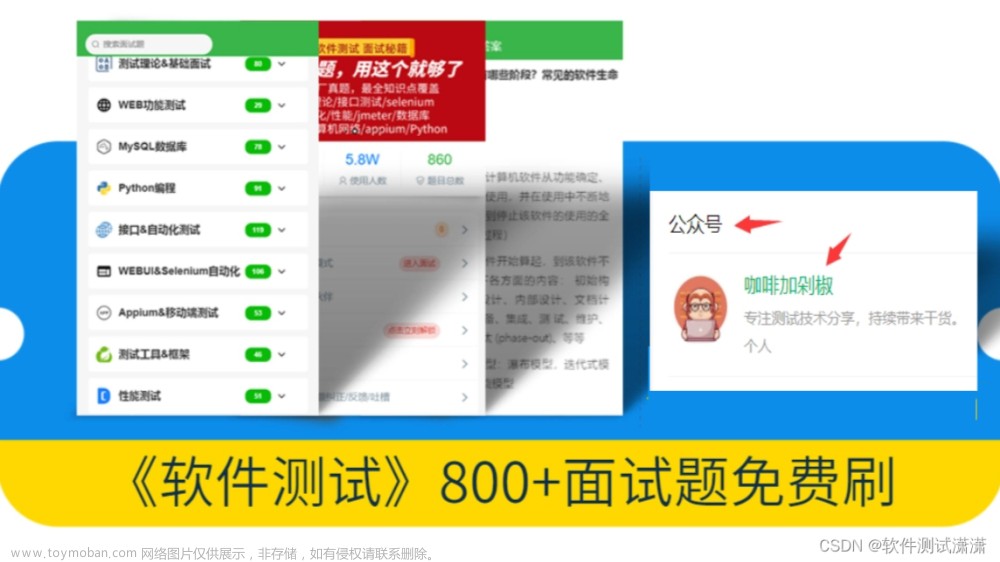
美丽汤(Beautiful Soup)是一个流行的Python库,用于从HTML或XML文件中提取数据。它将复杂的HTML文件转化为一个Python对象,使得用户可以更方便地解析、搜索和修改HTML内容。本文将介绍如何使用Beautiful Soup解析HTML内容,并给出参考资料和优秀实践。
一、Beautiful Soup的基本使用
1.安装
要使用BeautifulSoup,首先需要安装它。可以使用pip安装:
pip install beautifulsoup4
2.导入
安装完成后就可以导入BeautifulSoup了:
from bs4 import BeautifulSoup
3.获取HTML
要在BeautifulSoup中解析HTML,需要先将HTML文件读取为字符串。可以使用Python的标准库处理文件IO来读取文件:
with open("index.html", "r", encoding='utf-8') as f:
html = f.read()
如果要从URL中获取HTML,则可以使用Python的requests库:
import requests
url = "https://www.example.com"
response = requests.get(url)
html = response.content
4.解析HTML
现在有了HTML字符串,就可以使用BeautifulSoup来解析HTML了。首先需要创建一个BeautifulSoup对象:
soup = BeautifulSoup(html, 'html.parser')
这里的第二个参数告诉BeautifulSoup使用哪种解析器(例如,‘html.parser’ 使用Python标准库中的解析器来解析HTML)。在创建BeautifulSoup对象后,就可以使用它的方法和属性来访问HTML内容了。
5.搜索标签
解析HTML后,可以使用BeautifulSoup的方法来搜索标签。例如,要搜索所有的
标签,可以使用soup.find_all(‘p’)方法:
p_tags = soup.find_all('p')
这将返回一个包含
标签的BeautifulSoup对象列表。如果只需要第一个
标签,可以使用soup.find(‘p’)方法。
6.获取标签内容
要获取标签的内容,在BeautifulSoup对象上调用标签的.text属性即可。例如,获取第一个
标签的文本内容:
first_p_text = soup.find('p').text
第一个
标签的完整标签和其文本内容:
first_p = soup.find('p')
first_p_tag = str(first_p)
first_p_text = first_p.text
7.获取标签属性
要获取标签的属性,可以在标签上调用相应的属性名。例如,获取第一个标签的href属性:
first_a_href = soup.find('a')['href']
二、Beautiful Soup实践
1.搜索标签
BeautifulSoup提供了各种方法来搜索标签,如上文所述。下面我们将进行更详细的介绍。
find_all()方法
find_all()方法返回BeautifulSoup对象列表,其中包含符合指定参数的所有标签。它的基本用法是:
soup.find_all('tag', attributes)
其中tag是要搜索的标签名,attributes是一个字典,包含标签的属性和属性值。
例如,要搜索文档中所有的
soup.find_all('div')
如果要搜索标签的属性,则可以使用以下代码:
soup.find_all('div', class_='my_class')
其中class_是标签的class属性,因为在Python中class是一个保留字,所以需要在后面加上下划线。
如果要搜索多个标签,则可以将所有的标签名放在一个列表中:
soup.find_all(['div', 'p'])
如果要搜索所有的标签,则可以调用soup.find_all(True)。
此外,find_all()方法还可以接受一些额外的参数,如string参数,用于搜索具有特定字符串的标签:
soup.find_all(string='example')
或使用正则表达式搜索:
import re
soup.find_all(string=re.compile('^example'))
find()方法
find()方法与find_all()方法类似,但它只返回第一个匹配项。例如,要查找第一个
标签:
soup.find('p')
如果要在一个标签的子标签中查找,则可以使用该标签的方法:
div = soup.find('div')
p = div.find('p')
其他方法
BeautifulSoup还提供了一些其它的方法,如select()方法。该方法基于CSS选择器选择标签:
soup.select('div p')
```python
此外,还有find_parents(),find_next_siblings()等方法,用于搜索标签的上下文和兄弟关系。
2.修改HTML内容
BeautifulSoup不仅可以用于解析HTML,还可以用于修改其内容。下面将介绍一些常用的方法。
修改标签的属性
如果要修改标签的属性,可以在标签上调用相应的属性名。例如,将第一个<a>标签的href属性修改为new_href:
```python
soup.find('a')['href'] = 'new_href'
如果要添加一个新的属性,可以使用相同的语法:
soup.find('a')['new_attr'] = 'new_value'
修改标签的文本内容
如果要修改标签的文本内容,可以在标签上调用.text属性。例如,将第一个
标签的文本内容修改为new_text:
soup.find('p').text = 'new_text'
修改标签的名称
如果要修改标签的名称,可以在标签上调用.name属性。例如,将第一个
soup.find('div').name = 'new_tag'
删除标签
如果要删除一个标签,可以使用.decompose()方法。例如,将第一个
标签删除:
soup.find('p').decompose()
插入标签
如果要在HTML中插入一个新的标签,可以使用soup.new_tag()方法创建一个新标签,然后将其插入到DOM中。例如,将一个新的
标签插入到HTML的开头:
new_p = soup.new_tag('p', attrs={'class': 'new_class'})
new_p.string = 'new_paragraph'
soup.insert(0, new_p)
此外,insert_after()和insert_before()方法也可以用于在DOM中插入标签。
3.将HTML转换为字符串
要将解析后的HTML转换为字符串,可以在BeautifulSoup对象上调用.prettify()方法。例如:
print(soup.prettify())
这将返回一个格式化和缩进后的HTML字符串,可以用于保存或打印解析后的HTML。
三、参考资料
下面列出了一些关于BeautifulSoup的参考资料。
1.Documentation:
BeautifulSoup的官方文档是学习BeautifulSoup库的最佳资料。它详细介绍了BeautifulSoup的API和使用方法。
https://www.crummy.com/software/BeautifulSoup/bs4/doc/
2.Tutorial:
BeautifulSoup的官方教程是一份简单而明了的指南,适合初学者。
https://www.crummy.com/software/BeautifulSoup/bs4/doc/#tag
3.Stack Overflow:
Stack Overflow是一个程序员问答网站,可以在这里搜索有关BeautifulSoup的问题和答案。
https://stackoverflow.com/questions/tagged/beautifulsoup
四、优秀实践
下面列出了一些优秀实践,可作为使用BeautifulSoup的模板。
1.爬取X度搜索结果
以下代码使用BeautifulSoup爬取X度搜索结果的
和标签:
import requests
from bs4 import BeautifulSoup
def get_baidu_results(query):
url = f"https://www.xxx.com/s?wd={query}"
response = requests.get(url)
soup = BeautifulSoup(response.content, 'html.parser')
results = []
for item in soup.find_all('div', {'class': 'c-container'}):
heading = item.find('h3', {'class': 't'})
if heading:
link = heading.find('a')
url = link.get('href')
text = link.text.strip()
result = {'url': url, 'text': text}
desc = item.find('div', {'class': 'c-abstract'})
if desc:
desc = desc.text.strip()
result['description'] = desc
results.append(result)
return results
query = 'python'
results = get_baidu_results(query)
for result in results:
print(result['text'])
print(result['url'])
print(result['description'])
print()
2.爬取Douban电影Top250
以下代码使用BeautifulSoup爬取电影Top250的电影名、导演、演员、评分和简介:
import requests
from bs4 import BeautifulSoup
def get_douban_top250():
url = "https://movie.xxx.com/top250"
headers = {'User-Agent': 'Mozilla/5.0'}
response = requests.get(url, headers=headers)
soup = BeautifulSoup(response.content, 'html.parser')
results = []
for item in soup.find_all('div', {'class': 'item'}):
info = item.find('div', {'class': 'info'})
title = info.find('span', {'class': 'title'}).text
directors = info.find('div', {'class': 'bd'}).find_all('span')[1].text.strip().split('\xa0')
actors = info.find('div', {'class': 'bd'}).find_all('span')[3].text.strip().split('\xa0')
rating = info.find('span', {'class': 'rating_num'}).text
summary = info.find('span', {'class': 'inq'}).text if info.find('span', {'class': 'inq'}) else ''
result = {'title': title, 'directors': directors, 'actors': actors, 'rating': rating, 'summary': summary}
results.append(result)
return results
results = get_douban_top250()
for result in results:
print(result['title'])
print('导演:', result['directors'])
print('演员:', result['actors'])
print('评分:', result['rating'])
print('简介:', result['summary'])
print()
五、总结文章来源:https://www.toymoban.com/news/detail-500128.html
BeautifulSoup是一个功能强大的Python库,可以用于解析、搜索和修改HTML和XML文件。本文介绍了BeautifulSoup的基本使用、实践和参考资料。使用BeautifulSoup可以轻松地处理网页数据,具有广泛的应用场景,如爬虫、数据挖掘和数据分析等。文章来源地址https://www.toymoban.com/news/detail-500128.html
到了这里,关于【Python beautiful soup】如何用beautiful soup 解析HTML内容的文章就介绍完了。如果您还想了解更多内容,请在右上角搜索TOY模板网以前的文章或继续浏览下面的相关文章,希望大家以后多多支持TOY模板网!












